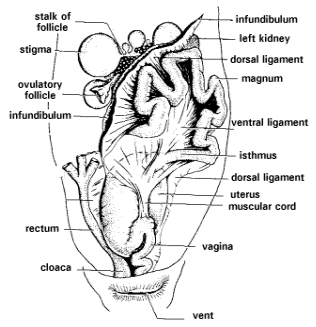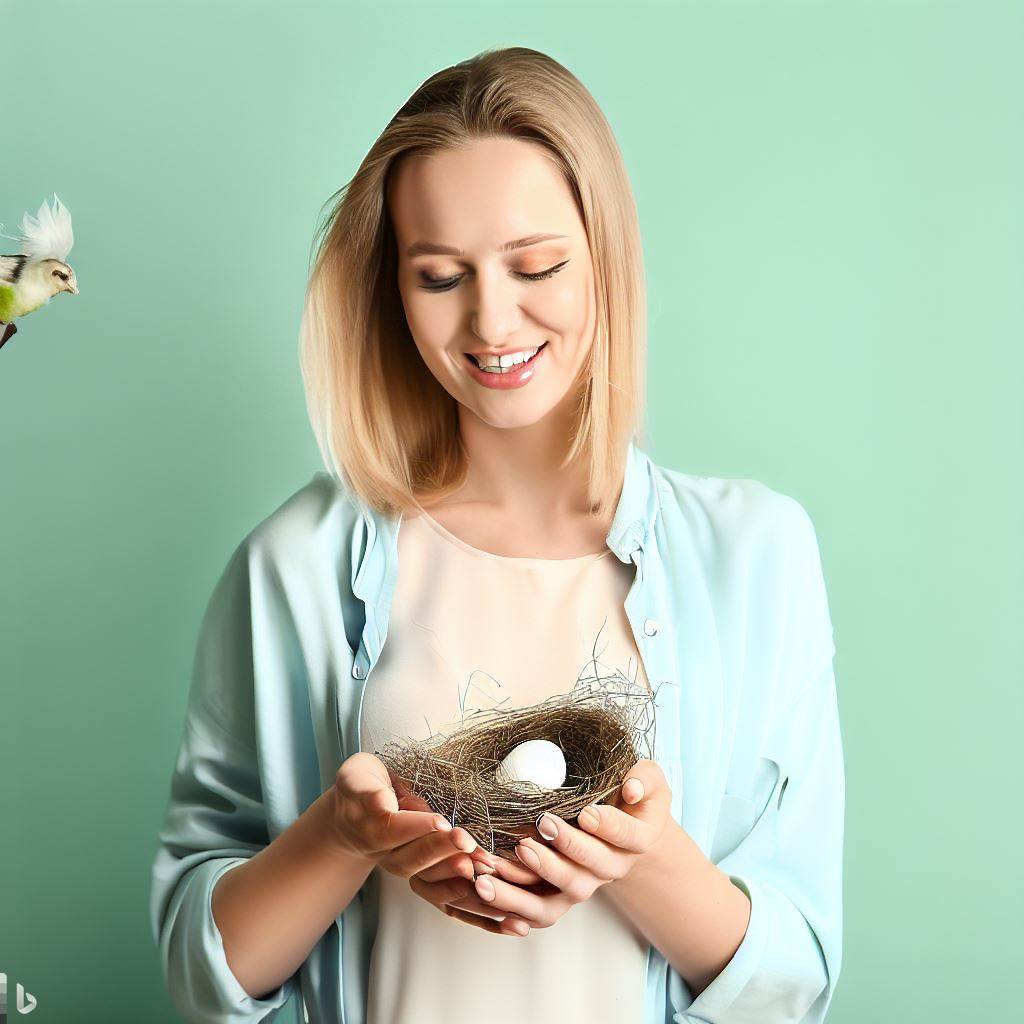The avian female reproductive tract has evolved over time into a complex structure, unique to birds. The process of forming and laying an egg is one of nature’s many wonders. Just like many other female animals, the avian female begins life with two ovaries and oviducts. However, in most species of birds, the left ovary and oviduct grow more rapidly than the right, and the right side regresses, leaving only the left ovary and oviduct. Some people believe that this is an adaptation to reduce weight, necessary to aid flight.
Just like many other female animals, the avian female begins life with two ovaries and oviducts. However, in most species of birds, the left ovary and oviduct grow more rapidly than the right, and the right side regresses, leaving only the left ovary and oviduct. Some people believe that this is an adaptation to reduce weight, necessary to aid flight.
At hatching, the left ovary contains all of the egg cells it will ever have. These cells will continue to develop once the hen reaches an age when she is able to reproduce.
Female birds may be determinate or indeterminate egg layers. Determinate layers are those birds that only lay a set number of eggs – such as crows or budgies. Indeterminate layers – such as parrots – will quickly replace any eggs that are lost, thus not laying a set number of eggs. Breeders utilize this by removing eggs and artificially incubating them, thus encouraging more eggs to be laid.
The female reproductive tract is divided into several parts. It takes approximately 25 hours for an egg to travel from the beginning to the end. The first part of the female reproductive tract is the infundibulum. This consists of a) a funnel which captures the ovulated egg and b) a tubular region known as the chalaziferous region. Sperm fertilizes the egg in the funnel portion of the left oviduct. However, a female will lay eggs even if there has been no mating to fertilize them. The egg then passes on to the chalaziferous region. Here a layer of albumen, known as the chalaziferous layer, and the chalazia which suspend the yolk, are secreted by glands in the tubular region. The egg remains in the 1st part of the reproductive tract for 15 minutes.
The second part of the oviduct is the magnum. This is the longest and most coiled portion of the oviduct. It is very thickwalled and contains many tubular glands which secrete albumen, sodium, magnesium and calcium. The egg remains in the magnum for three hours.
The isthmus is a short portion of the oviduct. During the 75 minutes the egg remains here, the inner and outer shell membranes which line the shell are formed and calcification is initiated.
The uterus or shell gland is the place the egg remains the longest, from 20 – 26 hours. The shell of the egg is secreted here and “plumping” occurs. Plumping is the rapid addition of watery solutions to the egg, which doubles the weight of the albumen.
The final part of the female reproductive tract is the vagina. The egg passes through this portion very rapidly as it is laid.
Sperm may be stored in specialized glands known as sperm host glands which are located in the vaginal sphincter for a few days. The sperm travel up to the infundibulum to fertilize the egg.
Most psittacines (parrots) lay their eggs every two days, while passerines (finches and canaries) and chickens usually lay an egg every 24 hours during their laying cycle.
The ovary is under complex hormonal control. In birds that are seasonal egg layers, the left ovary undergoes three phases of development. During the first phase, the prenuptial acceleration, the ovary enlarges. The second phase, the culmination phase, is when ovulation and egg laying occur. The third phase is the refractory period during which the ovary regresses in size until the next time.
During the early stages or late stages of egg laying, the infundibulum may fail to catch the ovulated egg and it may enter the abdominal cavity. This is known as “Internal Laying”. The egg may be absorbed or it may lead to an inflammatory process known as egg yolk peritonitis.
Next month’s column will cover the hormones and factors that trigger egg laying.

